New Forest
Explore hidden histories, historic photos, and things you never knew about New Forest from the collections and archives of Historic England.
Discover your local listed buildings and places
Introducing some of New Forest's most historic sites, included in the National Heritage List for England. Some of these captions have been summarised by AI. Click through for the official List entry. Skip this section and go to place by numbers
Rhinefield House
Brockenhurst
Rhinefield House, designed by W.H. Romaine-Walker and A.W. Tanner, is a 19th-century country house with restored gardens and notable North American arboretum in New Forest.
Brockenhurst Park
Brockenhurst
Brockenhurst Park transformed from agricultural land into a picturesque estate by Edward Morant from 1770, with Italianate gardens lauded in the early 1900s.
Studley Castle royal hunting lodge
Bramshaw
Studley Castle in the New Forest was a medieval royal hunting lodge, part of Edward III's constructions, surrounded by a moat and notable for its archaeological significance.
Cadland House
Fawley
Cadland House, originally a cottage orné, was expanded by Robert Drummond with designs by Lancelot Brown and Henry Holland. It is notable for surviving historical landscape features.
Roman road on eastern edge of Beaulieu Heath, 220m north …
Denny Lodge
Roman roads, introduced around AD 43, connected Britain for mail and commerce. The Beaulieu Heath road remains preserved, showing Roman engineering and historical transport routes.
Malwood Castle hillfort
Minstead
Malwood Castle hillfort, a rare Iron Age multivallate hillfort, retains significant archaeological and environmental evidence.
Church of St Michael and All Angels
Lyndhurst
The Church of St Michael and All Angels, designed by W. White, features Pre-Raphaelite interior art, including stained-glass by Burne-Jones and paintings by Lord Leighton and J.H. Pollen.
Tatchbury Mount hillfort
Netley Marsh
Tatchbury Mount hillfort remains intact with visible earthworks, offering insights into Iron Age settlement and defense strategies.
Breamore
Breamore
Breamore features an 1800 landscape park surrounding a historic house from 1580, linked to figures like William Dodington and Sir Edward Hulse.
Bokerley Dyke, and a section of Grim's Ditch, a section o…
Cranborne
Bokerley Dyke and Grim’s Ditch are significant Bronze Age earthworks on Martin Down, serving as boundaries. They demonstrate historical land division, agriculture, and settlement continuity.
Exbury House
Beaulieu
Exbury House, rebuilt by Lionel de Rothschild between 1919 and 1939, features renowned gardens with rhododendron collections, and was used as a naval base during WWII.
Shingles Bank Wreck NW68
Needles Channel, Isle of Wight
The site comprises the remains of a C17 armed vessel, located on the Shingles Bank off the Isle of Wight.
Avon Tyrrell
Sopley
Avon Tyrrell features 19th-century formal gardens by H.E. Milner, surrounding a country house designed by Arts and Crafts architect W.R. Lethaby, commissioned by Lord Manners in 1892.
Memorial obelisk marking the Barton on Sea Indian Army Co…
New Milton
Granite memorial obelisk marking the First World War Indian Army Convalescent Depot at Barton on Sea, unveiled 1917.
Church of St George
Damerham
The Church of St. George has 12th-century origins, featuring a south transeptual tower, rebuilt aisles, and a notable 15th-century wagon roof.
Augustus John statue
Fordingbridge
Statue of Augustus John OM, RA, in bronze on a limestone plinth, 1964-7 by Ivor Roberts-Jones, situated on the east bank of the river Avon, Fordingbridge, Hampshire.
Beaulieu Abbey
Beaulieu
The upstanding remains, earthworks and buried remains of a medieval Cistercian abbey.
Palace House
Beaulieu
Palace House is a historical country house, originally a 14th-century gatehouse converted to a lodge in the 16th century, and later expanded significantly in 1872.
Medieval hunting lodge at Church Place
Denny Lodge
The hunting lodge at Church Place is an important medieval site with well-preserved remains, providing insights into royal forest management and its historical significance in Hampshire.
25 and 25a Market Place (former Red Lion Public House and…
Ringwood
Former public house of C18 origin (number 25) amalgamated with a former retail unit (number 25a) both with C19 and C20 alterations.
Church of All Saints
Minstead
The Church of All Saints dates back to the early 13th century and features a mix of architectural additions from the 17th to 19th centuries, reflecting its historical development.
Burrard-Neale Memorial Gas Lamp
Lymington and Pennington
Decorative cast iron memorial gas lamp, 1832, in tribute to Admiral Sir Harry Burrard-Neale (1765-1840).
Hillfort at Castle Hill
Burley
Castle Hill is a slight univallate hillfort from the Late Bronze to Early Iron Age, surviving well despite historic disturbances and offering significant archaeological and environmental...
Hillfort 400m south of Home Farm
Denny Lodge
Slight univallate hillforts are significant for understanding Bronze to Iron Age transitions. The hillfort near Home Farm retains substantial archaeological and environmental evidence.
Hillfort at Castle Piece
Ellingham, Harbridge and Ibsley
Castle Piece hillfort is a slight univallate hillfort that is nationally important due to its well-preserved structure and archaeological potential.
Keyhaven War Memorial
Milford-on-Sea
First World War memorial, 1919, with later additions for the Second World War.
Two fancy barrows on Setley Plain
Brockenhurst
The saucer barrows on Setley Plain are rare Early Bronze Age monuments significant for their well-preserved condition, providing insight into prehistoric beliefs and social organization.
Rabbit warren and four bowl barrows on Stagbury Hill, Fur…
Bramshaw
The rabbit warren and four bowl barrows on Stagbury Hill reflect medieval and Bronze Age practices, indicating the area's significance for ritual activity and rabbit management.
Soldier's Ring
Damerham
Soldier's Ring, a rare Romano-British kite-shaped enclosure, offers insight into ancient agricultural practices.
The Butts round barrow cemetery
Godshill
The Butts round barrow cemetery, dating from the Bronze Age, retains undisturbed remains, showcasing the diversity of early prehistoric beliefs and social organization in a historically...
Church of St Mark
Lymington and Pennington
Parish church. 1859, by C.E. Giles, with choir vestry added 1933; memorial chapel enlarged 1948.
Fordingbridge War Memorial Gates
Fordingbridge
First World War memorial gates to the Recreation Ground, unveiled 1923, with later additions for the Second World War.
Rockbourne War Memorial
Rockbourne
First World War memorial with further names added after the Second World War.
Explore more
Search for more listed placesNew Forest through time
This timeline shows the first period of use for buildings and places on the National Heritage List for England, just one of the details recorded for every list entry. Click around to see how New Forest changes over time. Skip this section and go to aerial photos
Prehistoric Before AD 43
Prehistory covers a million years of human occupation before the Roman invasion, from hunter-gatherers of several human species, including Neanderthals, to more recent herders and farmers. It was a time of developing technologies and belief systems, involving contact with and migration from Europe, all reflected in the variety of artefact and monument types characteristic of particular prehistoric periods.
Roman AD 43 to AD 410
Britain was invaded by four legions of the Roman army in AD 43, who relatively rapidly conquered England from landing points in Kent. Parts of Wales and Scotland soon followed.
Roman culture brought urbanism, monumental buildings, wide-ranging religious beliefs, writing, and strong social hierarchy. The Roman administrative system was withdrawn in AD 410.
Early medieval AD 410 to AD 1066
This period, often associated in England with Anglo-Saxons and Vikings, saw a reduction in urban living from the Roman period and increased migration from northern Europe.
Traces of this period can be found in cemeteries, particularly in artefacts and in some of the very early churches, as this period also saw the growth of Christianity in Britain.
Medieval AD 1066 to AD 1540
This period, sometimes known as the Middle Ages, began with the Norman invasion in AD 1066. It saw a significant rise in military and defensive buildings such as castles and earthworks, as well as religious houses dominating a largely agricultural landscape.
The monarchy and Church dominated the period, which also saw the break with the Roman Catholic Church and the English reformation.
Post medieval AD 1540 to AD 1901
The Post-Medieval period brought seismic changes to life in England, with religious reformation leading to the democratization of worship and the destruction of hundreds of religious houses.
In parallel, there was a huge expansion of scientific study and enlightenment that permanently altered the nation's social structure and landscape. Industrialization and mass production lead to wider global trade, emigration, and immigration.
20th century AD 1901 to AD 2000
The 20th century saw an incredible expansion of England's transport networks, with suburban growth shadowing rapid infrastructural expansion. The establishment of state schools, hospitals, and modern technical colleges, with new architectural styles, radically changed the appearance of towns and cities.
Two catastrophic world wars and the 1918 pandemic also brought unprecedented change, altering England's built environment and social structures forever.
Prehistoric Before AD 43
Prehistory covers a million years of human occupation before the Roman invasion, from hunter-gatherers of several human species, including Neanderthals, to more recent herders and farmers. It was a time of developing technologies and belief systems, involving contact with and migration from Europe, all reflected in the variety of artefact and monument types characteristic of particular prehistoric periods.
Roman AD 43 to AD 410
Britain was invaded by four legions of the Roman army in AD 43, who relatively rapidly conquered England from landing points in Kent. Parts of Wales and Scotland soon followed.
Roman culture brought urbanism, monumental buildings, wide-ranging religious beliefs, writing, and strong social hierarchy. The Roman administrative system was withdrawn in AD 410.
Early medieval AD 410 to AD 1066
This period, often associated in England with Anglo-Saxons and Vikings, saw a reduction in urban living from the Roman period and increased migration from northern Europe.
Traces of this period can be found in cemeteries, particularly in artefacts and in some of the very early churches, as this period also saw the growth of Christianity in Britain.
Medieval AD 1066 to AD 1540
This period, sometimes known as the Middle Ages, began with the Norman invasion in AD 1066. It saw a significant rise in military and defensive buildings such as castles and earthworks, as well as religious houses dominating a largely agricultural landscape.
The monarchy and Church dominated the period, which also saw the break with the Roman Catholic Church and the English reformation.
Post medieval AD 1540 to AD 1901
The Post-Medieval period brought seismic changes to life in England, with religious reformation leading to the democratization of worship and the destruction of hundreds of religious houses.
In parallel, there was a huge expansion of scientific study and enlightenment that permanently altered the nation's social structure and landscape. Industrialization and mass production lead to wider global trade, emigration, and immigration.
20th century AD 1901 to AD 2000
The 20th century saw an incredible expansion of England's transport networks, with suburban growth shadowing rapid infrastructural expansion. The establishment of state schools, hospitals, and modern technical colleges, with new architectural styles, radically changed the appearance of towns and cities.
Two catastrophic world wars and the 1918 pandemic also brought unprecedented change, altering England's built environment and social structures forever.
Aerial photos of New Forest
Aerial photography helps reveal secrets of England's changing landscapes that are impossible to see from the ground. Skip this section and go to archive images
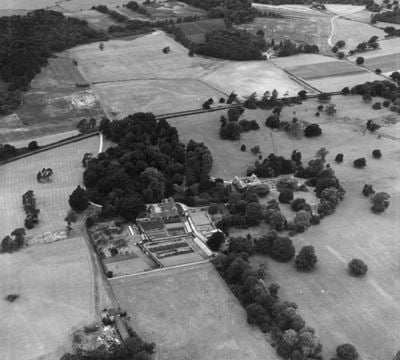
Bisterne
Bisterne Manor, Bisterne, 1949
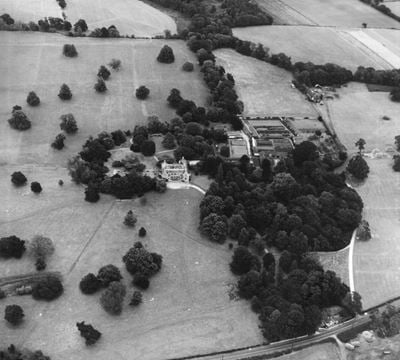
Bisterne
Bisterne Manor, Bisterne, 1949
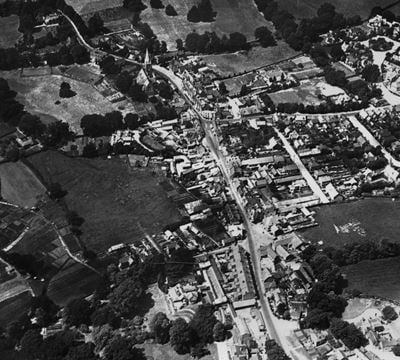
Lyndhurst
The village, Lyndhurst, 1925

Lyndhurst
The High Street, Lyndhurst, 1951

Beaulieu
Palace House, the ruins of Beaulieu Abbey and Great Goswell Copse, Beaulieu, 1930
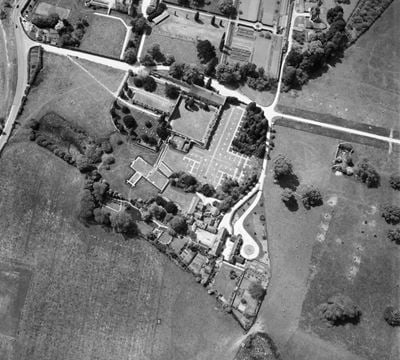
Beaulieu
Beaulieu Abbey, Beaulieu, 1949
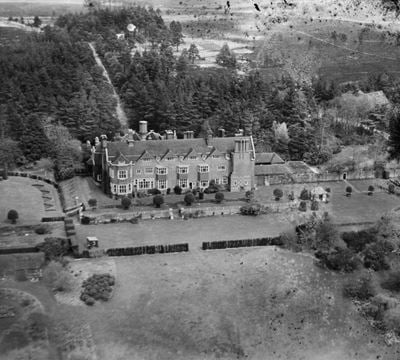
Sopley
Avon Tyrrell, Sopley, 1932
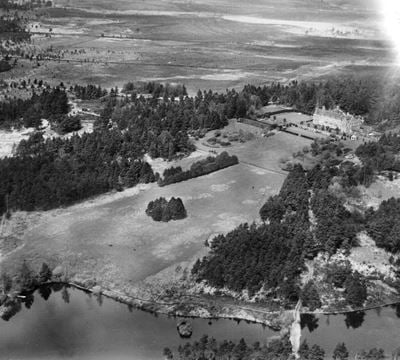
Sopley
Avon Tyrrell Park and Fish Ponds, Sopley, 1932

Lymington
The Lymington Branch Railway, Fishermans Quay and the town centre, Lymington, 1925
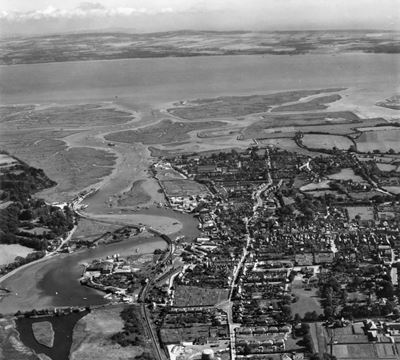
Lymington
Lymington River and the town, Lymington, 1948
New Forest in the Historic England Archive
The Historic England Archive cares for over 15 million images, dating from the 1850s to the present day. Discover stunning images of New Forest's past. Skip this section and go to stories about heritage
Charles George Harper Collection
Boldre, New Forest, Hampshire
Date created: 1892 - 1933
St John's Church, seen from the south-west
Eric de Mare
New Forest, Hampshire
Date created: 1965 - 1980
General view of the Fawley Power Station complex with a tower under construction.
John Gay Collection: Counties
New Forest, Hampshire
Date created: 1950s - 1960s
Horses grazing and resting in the enclosed area around Ringwood Memorial Cross
John Laing Collection
New Forest, Hampshire
Date created: circa 1950 - 1951
View of completed administration block at Fawley Esso Oil Refinery
London, Midland and Scottish Railway Company
New Forest, Hampshire
Date created: Jul 1906
A view of trees in the New Forest
Alfred Newton and Sons
Beaulieu, New Forest, Hampshire
Date created: 1902 - 1920
HISTORICAL GROUND PLAN
Nigel Temple Collection of Postcards of Parks and Gardens
New Forest, Hampshire
Date created: 1930 - 1950
GENERAL VIEW FROM THE BRIDGE SHOWING THE TEA GARDENS
Eric de Mare
New Forest, Hampshire
Date created: 1965 - 1980
Detail view of Fawley Power Station showing the construction of a tower.
John Gay Collection: Counties
Ringwood, New Forest, Hampshire
Date created: 1950s - 1960s
Horses grazing next to the Ringwood Memorial Cross, opposite shops on Christchurch Road
John Laing Collection
New Forest, Hampshire
Date created: Apr 1950
The lounge area of the 'Esso' Social Centre in Fawley showing furnishings and a bar located in an alcove
London, Midland and Scottish Railway Company
New Forest, Hampshire
Date created: Jul 1906
A view showing mature trees in an unidentified area of the New Forest
Nigel Temple Collection of Postcards of Parks and Gardens
New Forest, Hampshire
Date created: 1920 - 1960
GENERAL VIEW OF THE HAMPSHIRE AVON RUNNING BESIDE THE RECREATION GROUND
Stories about heritage in your local area
Historic England publishes news, blogs, research, videos, and podcasts celebrating England's rich heritage. Discover the stories we have about New Forest. Skip this section and go to education
12 of the Oldest Tea Rooms in England
Mentions The Thatched Cottage Restaurant
Tea rooms first appeared in England in the 18th century, and the first tea room, Twinings, has stood in the same spot for over 300 years.
10 Dramatic Coastal Sites to Visit this Summer
Mentions Type G Hangar (Calshot Former Rnas Station Approximately 130 Metres South West of Castle)
Ten coastal sites in England, which are open to the public and worth a visit all year round.
Celebrating the Harold Wingham Collection Through Active Participation
Mentions New Forest
A collaborative project remembers the work of Harold Wingham, an unsung hero of aerial photography.
Six Seaside Gems Listed
Mentions New Forest
Historic England announces the listing of six seaside heritage sites spanning some of England’s best-loved coastal locations.
Heritage Across the Country Benefits from Latest Funding from the Culture Recovery Fund
Mentions New Forest
Over 470 heritage organisations across the country to benefit from the second round of Culture Recovery Fund grants
War Memorials Built 100 Years Ago Listed to Commemorate the First World War on Armistice Day
Mentions Memorial obelisk marking the Barton on Sea Indian Army Convalescent Depot
These war memorials and shrines became a precursor what was to come: the national movement to memorialise that took place following the war.
National Collection of Sir Herbert Baker’s War Memorials Recognised
Mentions Thorney Hill War Memorial
15 First World War memorials by Sir Herbert Baker have been listed or upgraded to commemorate the centenary of the Commonwealth War Graves Commission.
Public Asked to Chronicle the Nation’s Missing History
Mentions Rufus Stone
The nation's list of historic buildings and places is now open to public contributions for the first time ever.
New Forest's social history through photos
Over 10,000 images from the Historic England Archive have been specially selected and re-captioned for teachers, students, and anyone who wants to learn more about their local area. Skip this section and go to grant-aided places
Workmen queuing at a mobile canteen, Fawley, Hampshire
Period: 1950s (1950 - 1959)
The men in the picture were working for John Laing plc to build a reservoir for the Esso Refinery Company in September 1954.
Workmen queuing at a mobile canteen, Fawley, Hampshire
Village hall, Woodgreen, Hampshire
Period: 1930s (1930 - 1938)
This village hall was built 1930-1. It was donated by Vaughan Nash.
Village hall, Woodgreen, Hampshire
The main entrance to the Safeway supermarket, Totton, Hampshire
Period: 1990s (1990 - 1999)
John Laing Plc built the supermarket in 1994 along with a housing development.
The main entrance to the Safeway supermarket, Totton, Hampshire
The Schoolhouse, Fawley, Hampshire
Period: Georgian (1714 - 1836)
This school house was built in c1830. It an early example of a National School in this district.
The Schoolhouse, Fawley, Hampshire
The Jolly Sailor Public House, Fawley, Hampshire
Period: Stuart (1603 - 1713)
This building was originally Ashlett Mill. It was a tidemill. This mill was built in 1816, but records of a mill on this site date back to 1618.
The Jolly Sailor Public House, Fawley, Hampshire
The Drummond Arms Hotel, Hythe, Hampshire
Period: Edwardian (1902 - 1913)
Looking along the main street, which connected the ferry to the town, with the Drummond Arms Hotel, a large yellow brick building on c.
The Drummond Arms Hotel, Hythe, Hampshire
Rufus Stone, Minstead, Hampshire
Period: Medieval (Middle Ages) (1066 - 1484)
This monument commemorates the death of King William II, the son of William the Conqueror.
Rufus Stone, Minstead, Hampshire
Rufus Stone, Stoney Cross, Minstead, Hampshire
Period: Edwardian (1902 - 1913)
This monument was put up by Earl de la Warr in 1745 and encased in iron in the 19th century. It marks the site of an oak tree.
Rufus Stone, Stoney Cross, Minstead, Hampshire
Discover more
Ready for more local stories? Take a look at these other places nearby
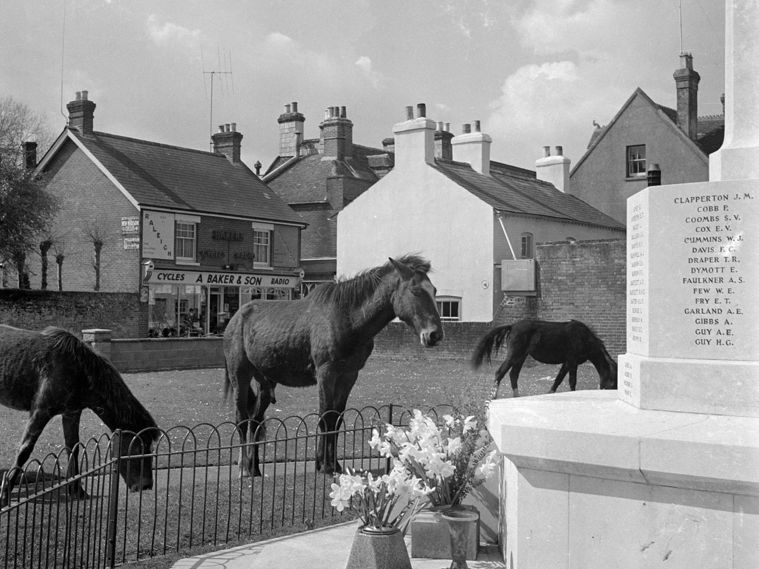
New Forest
National Park
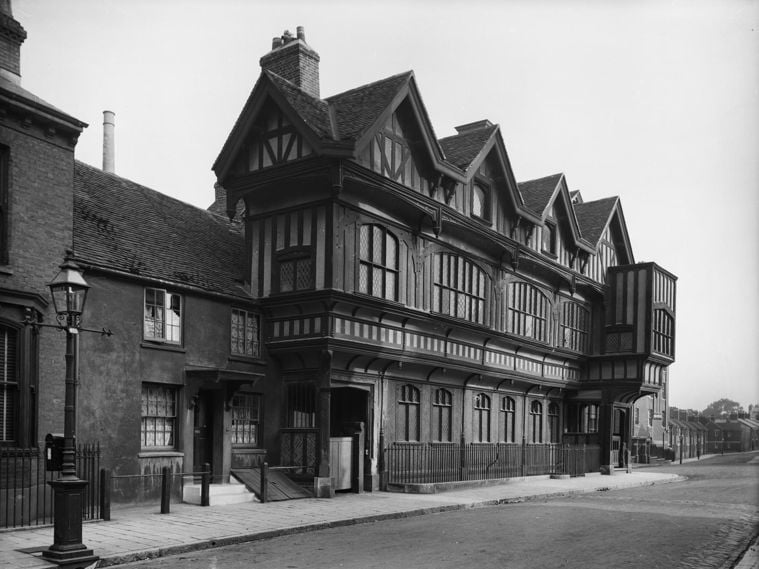
Southampton
Local Authority District

Bournemouth, Christchurch and Poole
Local Authority District